Employees are overwhelmed by information and underwhelmed by what actually helps them. Internal communication is your chance to cut through the noise and become the one source your people actually trust. In this guide, we cover exactly why internal communications is so important this year.
When you look at all the channels available to employees these days—social media, traditional media, podcasts, Slack DMs—they’re all full of noise. When context is missing, misinformation spreads fast. And trust? It’s fragile.
That’s why 2025 presents a significant opportunity for internal communication to step up—not just as another source of updates, but as the trusted channel employees turn to for clarity, connection, and direction.
Done right, internal communication becomes a stabilizer in uncertain times. It builds trust when everything else feels unpredictable. And it gives employees a clear line of sight into what matters most, without the chaos. Let’s break down the top 10 reasons why internal communication is so important in 2025—and how rethinking your approach can transform your business from the inside out.
Take a self-guided tour of ContactMonkey
See how our key features can streamline your internal communications.
Take product tour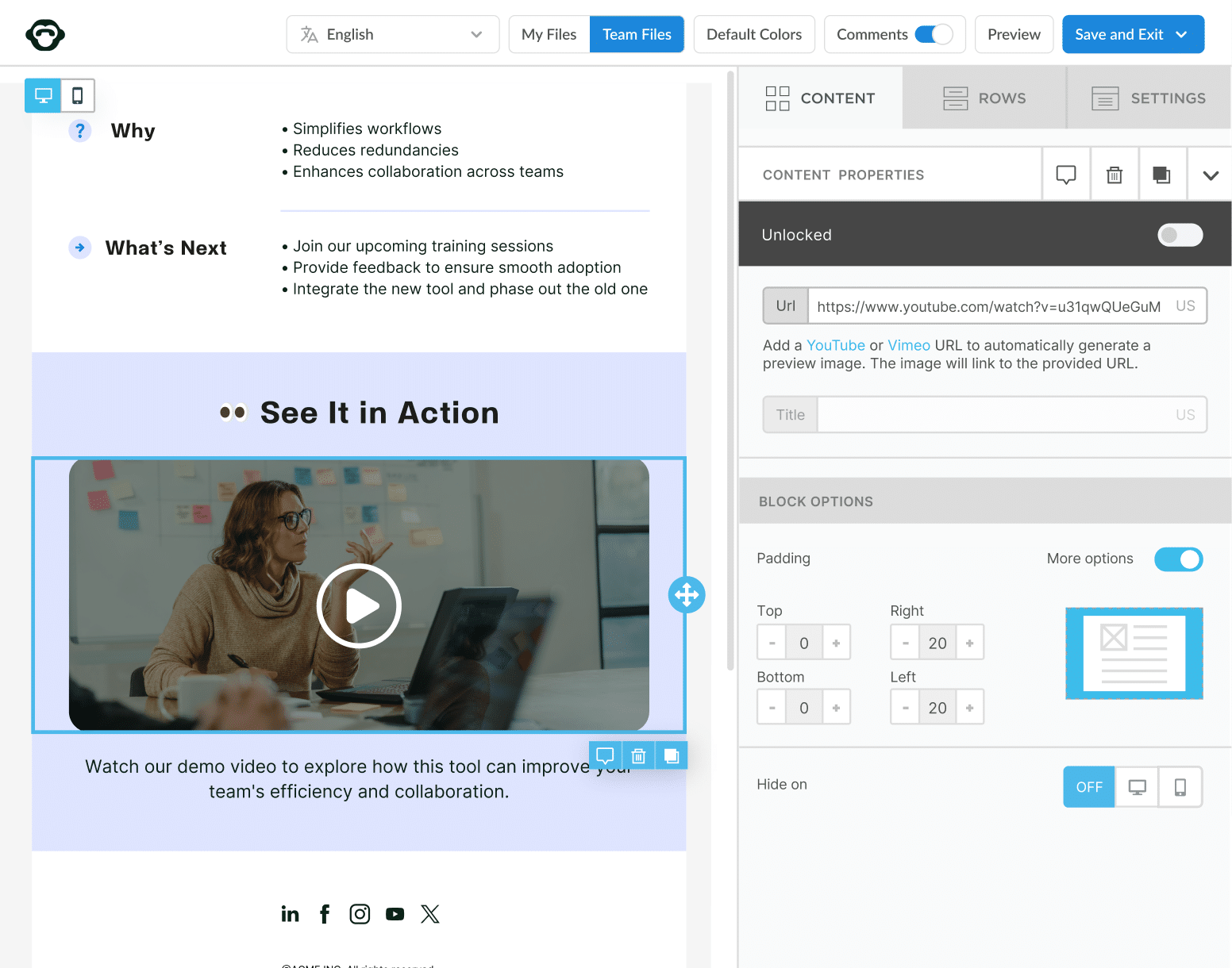
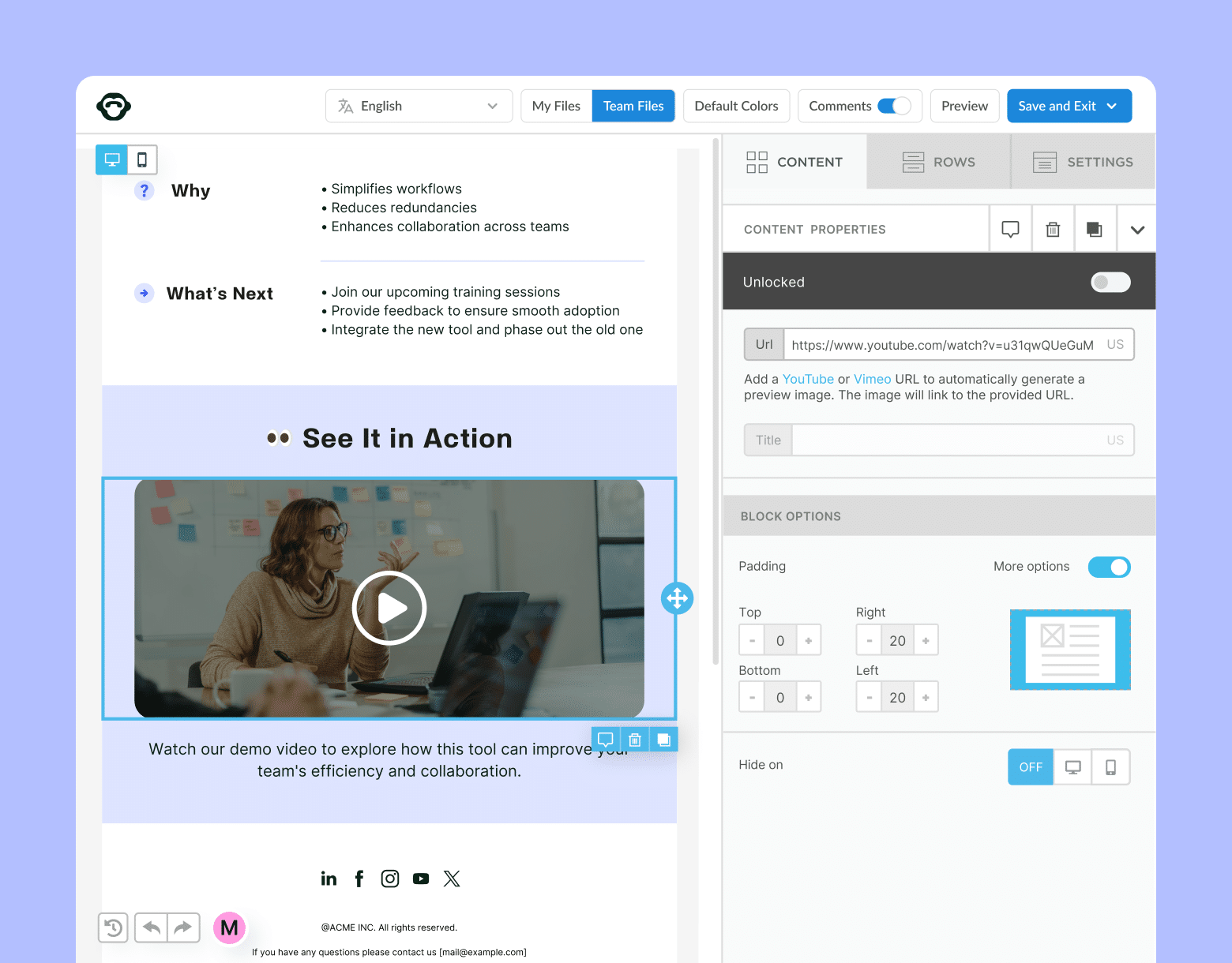
What Does Internal Communication Look Like in 2025?
Internal communication in 2025 is fast, personalized, and data-driven. It’s not just about pushing out announcements, but instead about building a two-way communication that keeps employees informed, aligned, and involved.
A modern internal communication strategy meets people where they are. That means using a mix of email, SMS, intranets, mobile apps, and digital signage to reach employees on any device, in any location—from corporate offices to factory floors.
With the rise of smart internal communication tools and platforms, teams can now segment audiences, track engagement in real time, and continuously improve how and when messages are delivered. The result has been better-informed teams, stronger alignment, and a more connected workplace culture.
10 Reasons Why Internal Communications Is Important in 2025
Below are ten clear, actionable reasons that show how better communication leads to stronger cultures, more engaged teams, and better business outcomes. Whether you’re building your first internal communication strategy or optimizing an existing one, these are the results that matter.
1. It builds a more connected culture
Employees want to feel included, especially when working across locations or departments. Internal communication is how organizations create a shared sense of belonging and unity.
Why this is important: In a hybrid workforce, connection doesn’t happen by default. A strong internal communication strategy helps employees see themselves as part of the larger mission.
What this could look like in practice: A weekly employee newsletter featuring employee spotlights, team wins, and leadership messages that reinforce company values.
How to bring this element to life: Use internal communication tools like ContactMonkey to personalize content by location, department, or job role and include quick polls or recognition features to boost engagement.
How you can measure success: Track email open rates, click-through rates on engagement sections (like employee spotlights), and employee sentiment through embedded surveys. Look for increases in cross-functional collaboration or employee mentions of internal initiatives in feedback channels.
Modern internal comms and measurement tools
No design or technical expertise needed. Save time, increase engagement, and dazzle your employees with fun and interactive communications.
Explore all features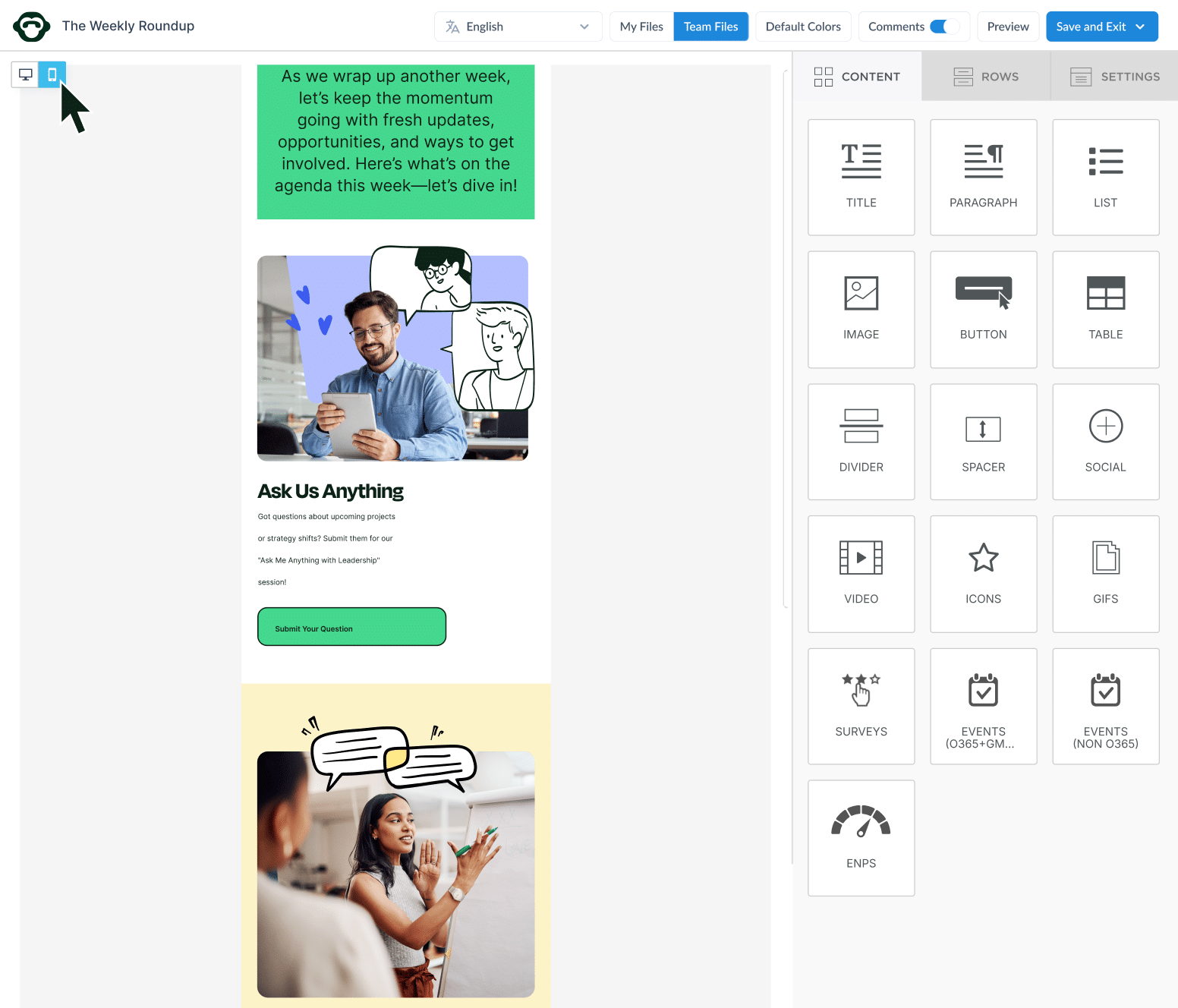
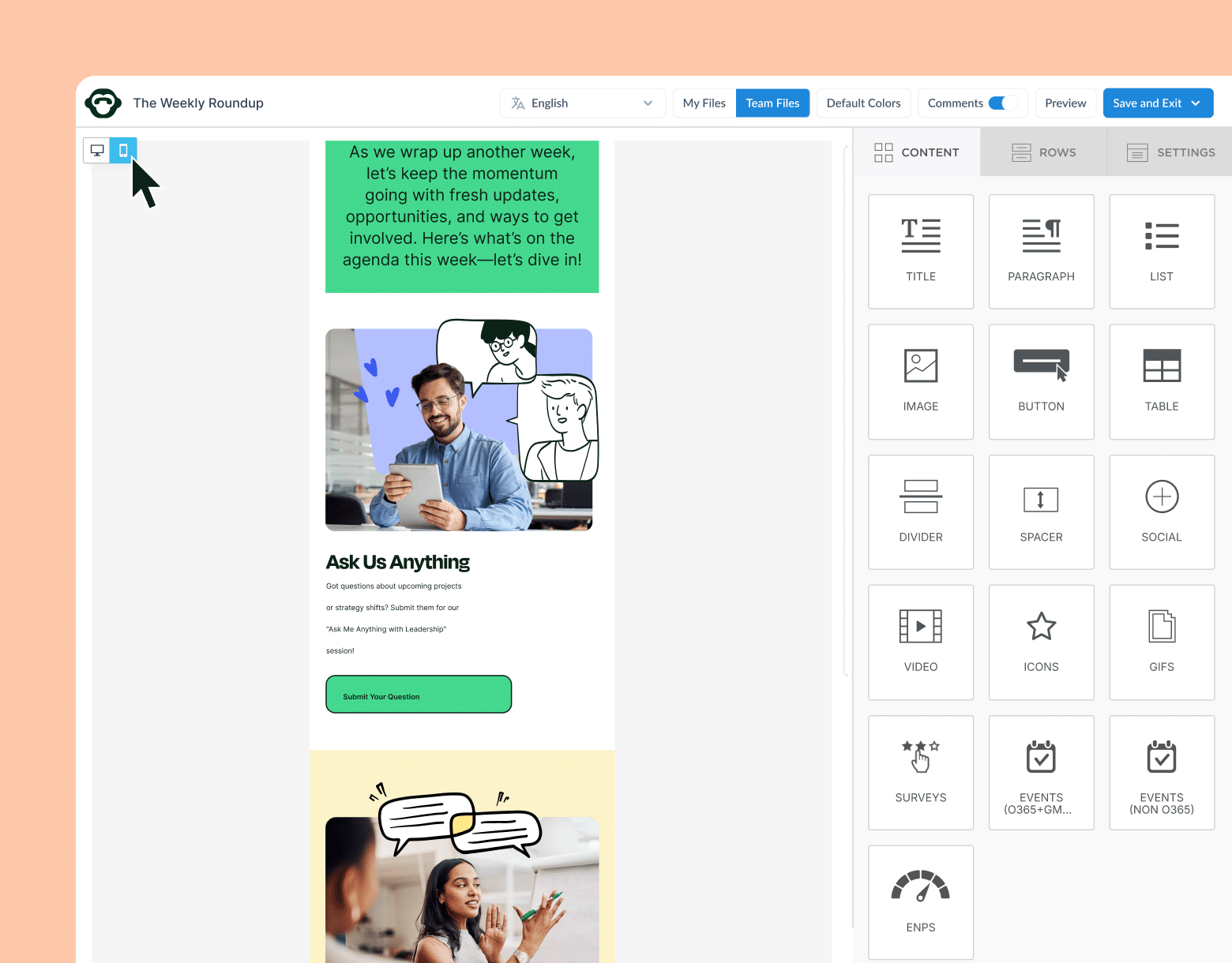
2. It reduces misinformation and confusion
Without clear messaging, employees are left to fill in the blanks. This creates gaps, inconsistencies, and sometimes costly misunderstandings.
Why this is important: Miscommunication slows teams down and damages trust. The importance of internal communication lies in its ability to centralize updates and eliminate guesswork.
What this could look like in practice: A centralized hub or consistent email cadence where key updates, deadlines, and reminders are shared in plain language.
How to bring this element to life: Build a structured internal communication plan and send messages through trusted platforms like Outlook or Gmail with engagement tracking enabled.
How you can measure success: Monitor reductions in repeated questions, task duplication, or help desk tickets related to internal updates. Track open rates, message comprehension through quizzes or feedback forms, and employee satisfaction with communication clarity.
3. It boosts employee engagement
When employees are informed, they feel empowered. Clear communication helps them understand how their work matters and where they can contribute.
Why this is important: The importance of internal communication is directly tied to employee motivation. Engagement starts when people feel connected to goals and leadership.
What this could look like in practice: Monthly interactive newsletters that include recognition shoutouts, embedded pulse surveys, and employee-submitted content.
How to bring this element to life: Use internal communication platforms to track click-throughs, segment audiences, and tailor messaging based on engagement trends.
How you can measure success: Track employee Net Promoter Score (eNPS), pulse survey scores, and participation rates in recognition programs or contests. Monitor newsletter click-throughs and feedback volume to gauge overall interest.
4. It aligns teams around company goals
Alignment doesn’t happen on its own. When employees understand priorities, decision-making becomes faster and more effective.
Why this is important: Teams work better when they share a common direction. Knowing what to focus on—and why—depends on strong internal communication.
What this could look like in practice: Regular leadership communication that explains business goals in clear, actionable language, with takeaways for each team.
How to bring this element to life: Use audience segmentation for internal communications in your internal communication strategy to deliver relevant updates to different departments, ensuring the message lands with the right context.
How you can measure success: Track employee understanding of company goals through feedback surveys. Compare engagement metrics across departments. Review project completion rates and alignment-related metrics (like time-to-decision).
Unlock Internal Comms Superpowers
Discover why 10,000+ rely on us. See the internal email and employee newsletter platform in action.
Book demo

5. It improves change management
Change is a constant in today’s workplace, and communication plays a critical role in how it’s received and acted on.
Why this is important: Poor communication during transitions leads to confusion, resistance, and disengagement. Why internal communication is important becomes clear when managing organizational shifts.
What this could look like in practice: A dedicated email series that breaks the change into stages, offers context, and opens the door for feedback.
How to bring this element to life: Use your internal communication tools to automate the rollout and measure which messages employees are reading, clicking, or skipping.
How you can measure success: Monitor participation in change management communication, employee sentiment before and after the rollout, and survey data related to confidence in leadership or understanding of the change.
6. It drives productivity and performance
Clarity saves time. When employees don’t have to search for information, they can focus on doing their best work.
Why this is important: Clear communication reduces delays and bottlenecks. The importance of internal communication shows up in how quickly and confidently teams can act.
What this could look like in practice: Pre-built employee email templates for routine updates, project briefs, or cross-functional launches.
How to bring this element to life: Use an email builder that integrates with your everyday tools to streamline how information is shared across teams.
How you can measure success: Track reductions in missed deadlines or duplicated efforts. Monitor email response times, project cycle times, and employee-reported clarity on tasks and goals.
7. It strengthens trust and transparency
Employees want to hear from leadership, not occasionally, but consistently. Trust is built when communication is open, honest, and ongoing.
Why this is important: Transparency increases confidence. When employees feel informed, they’re more likely to support decisions and contribute their best. That’s one reason why internal communication is important in every workplace today.
What this could look like in practice: Monthly video-based internal communications from the CEO, anonymous Q&A forms, and leadership responses shared company-wide.
How to bring this element to life: Use your internal communication platform to schedule recurring leadership messages and invite employee questions through surveys or reply-enabled emails.
How you can measure success: Track increases in leadership email engagement, participation in Q&As, and employee feedback on transparency. Use pulse surveys to assess trust levels over time.
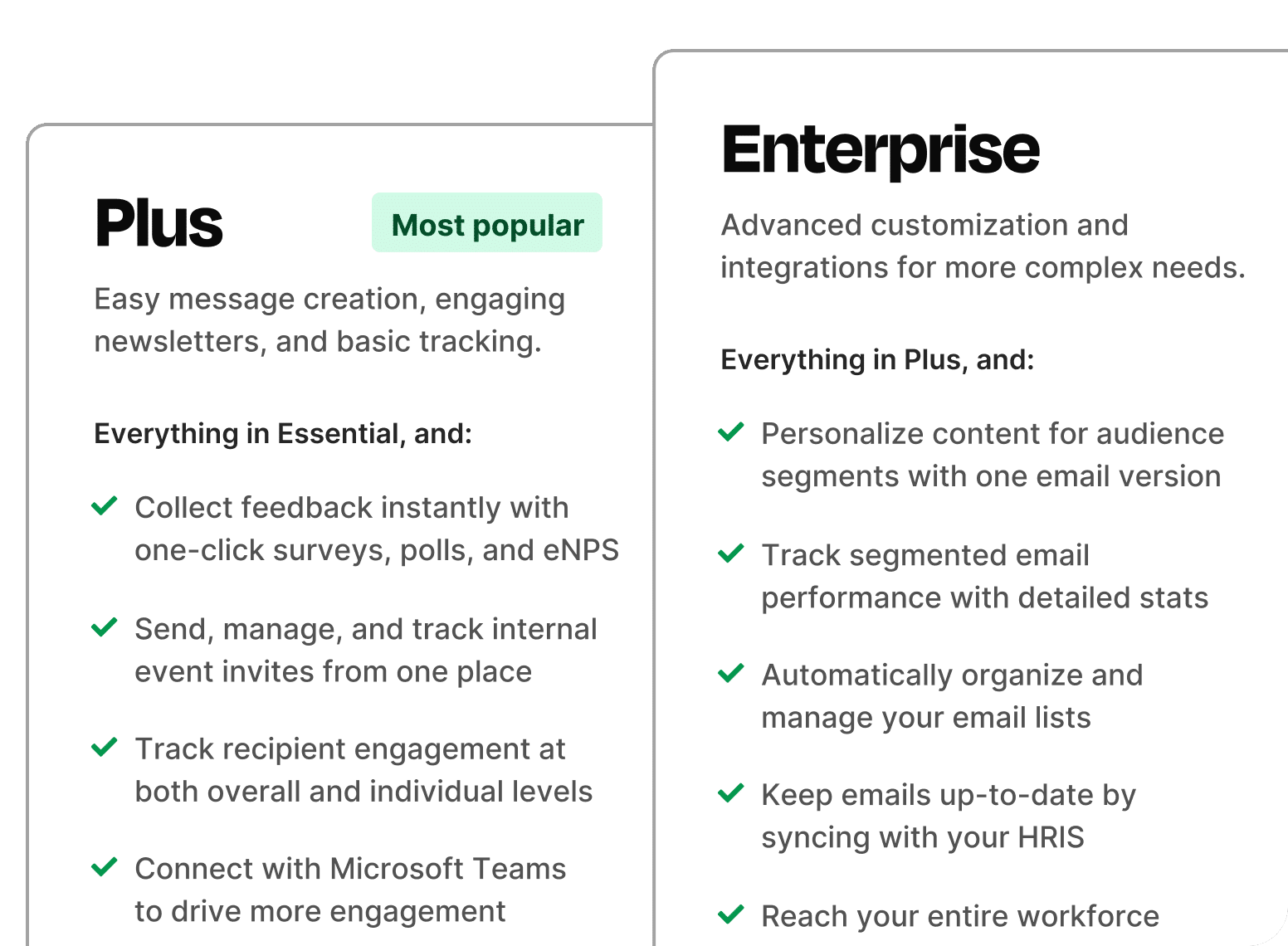
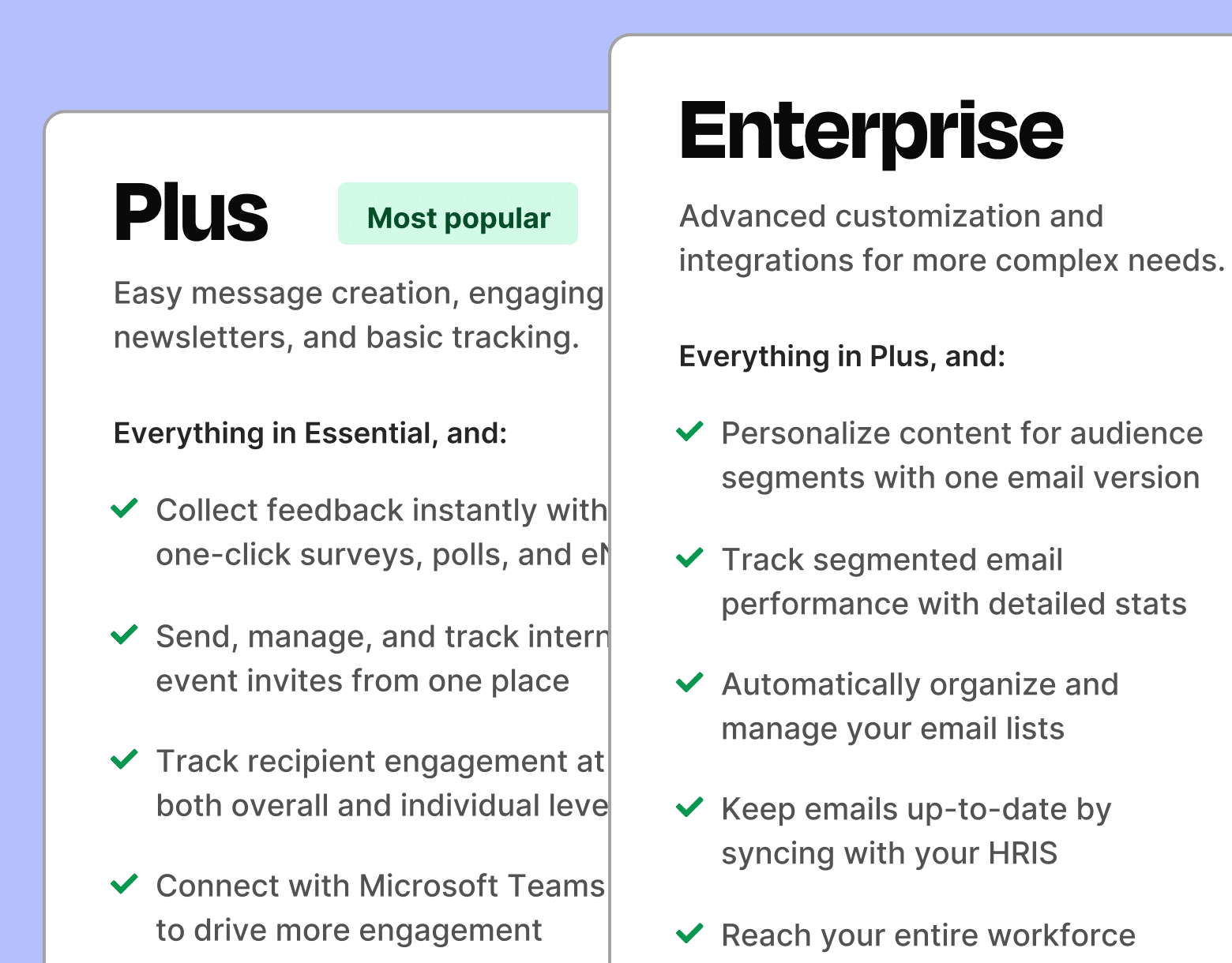
8. It supports employee retention
People don’t leave great companies—they leave when they feel out of the loop, unheard, or disconnected from purpose.
Why this is important: Clear communication makes employees feel valued. When they understand what’s happening and why, they’re more likely to stay. This illustrates the importance of internal communication in reducing turnover.
What this could look like in practice: A consistent digital employee onboarding communication journey, ongoing milestone check-ins, and newsletters that showcase growth opportunities.
How to bring this element to life: Build a retention-focused internal communication plan that includes automated welcome messages, feedback loops, and personalized employee development updates.
How you can measure success: Track new hire engagement rates, onboarding survey results, and retention within the first 6 to 12 months. Monitor exit interviews for communication-related themes.
9. It gives employees a voice
Communication should flow in both directions. When employees can share feedback and know it will be heard, engagement rises.
Why this is important: People want to influence the culture they’re part of. Listening shows respect and builds community—another reason why internal communication is important to long-term engagement.
What this could look like in practice: Pulse surveys, open comment sections in internal emails, and team retrospectives that are shared and acted on.
How to bring this element to life: Use internal communication tools with built-in survey functionality to collect feedback, and follow up with “You said, we did” updates that show employees their input matters.
How you can measure success: Monitor response rates, recurring feedback themes, and follow-up action satisfaction. Track improvements in engagement and manager feedback scores over time.
10. It proves value with measurable results
Modern internal communication tools provide real-time insights. You can now track what’s working, what’s being ignored, and where to improve.
Why this is important: Communication can now be a data-driven function. That means teams can demonstrate impact and continuously improve—a key reason why internal communication is important for strategic success.
What this could look like in practice: Quarterly dashboards that share open rates, link clicks, survey responses, and engagement by department.
How to bring this element to life: Use tools like ContactMonkey to build interactive emails and track engagement metrics directly within Outlook or Gmail. Share the results with leadership to showcase the value of effective internal comms.
How you can measure success: Set quarterly benchmarks for message engagement, content interaction, and employee feedback. Share insights with leadership to prove the ROI of internal comms.
Reasons to Use ContactMonkey for Your Internal Comms in 2025
If your internal emails are getting ignored, employees seem disconnected, or feedback loops have gone silent—it’s a sign your internal communication needs a refresh. That’s where having the right tools makes all the difference.
Here’s why internal communicators are choosing ContactMonkey:
- Create professional internal emails in minutes: Use drag-and-drop templates through the Email Builder Feature to build beautiful, on-brand newsletters—no designers or developers needed.
- Track performance in real time: Through the Analytics Dashboard Feature, measure open rates, click-throughs, read time, and engagement trends across teams to prove the importance of internal communication with data.
- Segment and target your audiences: Send tailored messages to specific roles, locations, or departments using dynamic distribution lists thanks to the List Management Feature.
- Collect feedback instantly: With Employee Feedback Features, add pulse surveys, emoji reactions, and eNPS surveys directly into your internal emails.
- Automate essential updates: Schedule onboarding messages, HR reminders, or policy rollouts and ensure no one misses a beat.
If you’re looking to build a smarter internal communication strategy in 2025, ContactMonkey offers the power, simplicity, and analytics to make it happen. Book a 15-minute call to see how our platform can help you turn internal comms into your company’s most trusted channel.


